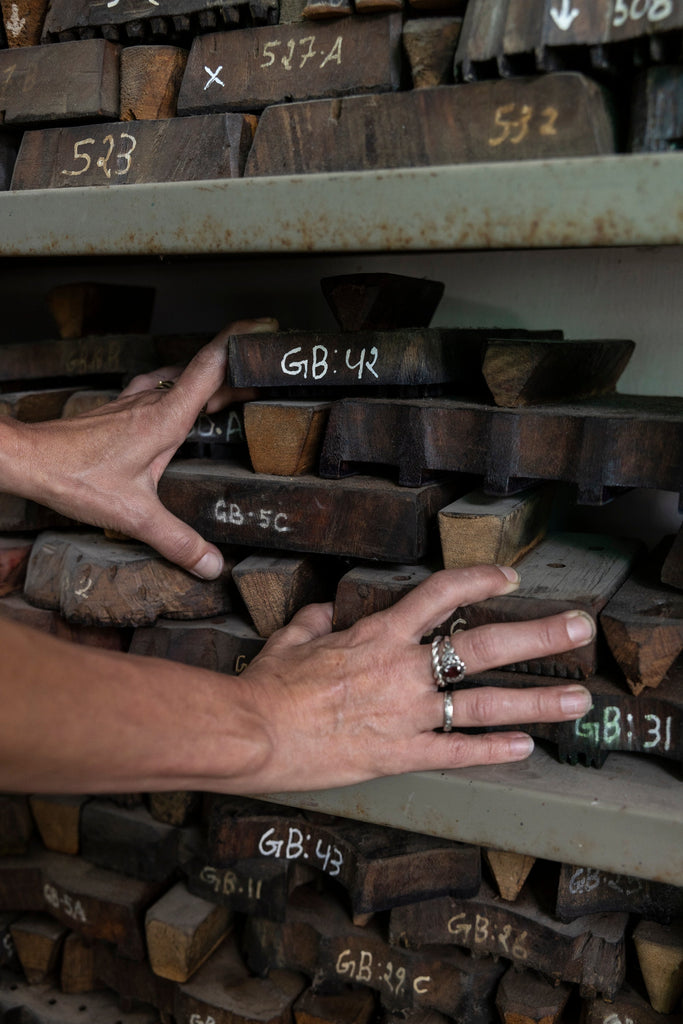November 05, 2023
Block Printing our new Collection

Have you wondered how we, at The ANJELMS Project, get to create our unique prints?
Block printing is a multi-step process that involves several stages from design conception to the final printed fabric.
Here are the different steps involved in block printing:
1. Designing:
The process begins with the creation of a design. Gaelle and her daughter Madeleine or from time to time local Australian visual artists work together on drawings that illustrates the story, the message they wish to convey for the collection. The drawings are then converted into artworks on computer where each colour has to be separated to create an individual block that will fit in a jigsaw like manner. Fiona from The Stitching Project then takes the images to Mr Satnaryan in Jaipur who will hand carve the design onto strong, fine grained mature wood to create our blocks for printing. The design is then transferred onto tracing paper or transparent film.
2. Carving the Blocks:
Mr Satnaryan carves the design onto wooden blocks. Each block represents a specific color or element of the design. The blocks are typically made from teak or sheesham wood, known for their durability and fine grain.

An example of the block carving process from our visit to the Anokhi Museum
3. Preparing the Fabric:
Our handspun and hand loomed Khadi or slow loomed cotton silk is pre-washed and treated to remove any sizing or impurities. It is then stretched and secured tightly on a printing table or frame to ensure a smooth surface for printing.
4. Mixing the Dyes:
Global Organic Textile Standards (GOTS) certified inks are used in our block printing. Parwun, master block printer at The Stitching will mix the inks originally in powder form with water and a binder to create a smooth consistency and vibrant colors. His skill and experience means he will exactly match the colours from our artworks before recording the percentage of each component for consistency and future reference.

5. Block Printing:
Parwun then dips the wooden block into the pad he prepared and carefully places it onto the cloth. This requires strength, precision as this step will be repeated hundreds of times to cover the cloth on the table. This process is repeated for each color and design element, using different blocks.

6. Drying and Fixing:
Once the printing is complete, the fabric is left to dry naturally. After drying, the fabric is often treated with steam or heat to fix the colors and make them permanent.
Finally,the fabric is now ready to be transformed into a garment and sent to the tailoring unit under the watchful supervision of Master Bulb Ji.

Every step in block printing requires precision, skill, and attention to detail. The process is labor-intensive, but this is a process that we, at The ANJELMS Project, are incredibly passionate about. Like the Khadi cloth handwoven in local villages around The Stitching Project, to use block printing is for us a way to showcase and nurture the cultural heritage of the community we work with. It allows this community to pass on the knowledge and skills that has been part of their life of centuries and keep those skills relevant and attractive for the younger generations. A block printed piece is a piece of art with its uniqueness, its imperfections that brings an organic feel to it and a life of its own and we hope you will treat each your garment that way.


Leave a comment